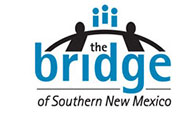Policy is Key to Sustaining Effective Practice
As published in the Las Cruces Bulletin – September 21, 2018
The Pete V. Domenici Public Policy Conference really has been a hallmark event in the community, bringing national and state leaders to Las Cruces to discuss the most pressing policy issues facing New Mexico and the nation.
Policy directs local, state, and national governments to mobilize millions and, sometimes billions, of dollars to meet needs of individuals, communities, and the nation, at large.
But at the heart of good policy lies good practice informed by proven approaches that have worked in real time for real people.
That’s why policy benefits from the pioneering and innovative work done by foundations and nonprofits. Once that work is proven, policy then becomes the structure for sustaining and scaling solutions to achieve even more benefit.
The Early College High School movement in New Mexico is a perfect example. The partnership represented by the nonprofit The Bridge of Southern New Mexico gave birth to the state’s first early college high school (ECHS) – Arrowhead Park ECHS. The Bridge brought together business, education, and economic development to seek solutions for increasing graduation rates and found an innovative way of doing high school that might work for our students.
The model leveraged the existing resources of Las Cruces Public Schools, Doña Ana Community College, and New Mexico State University plan, fund, build, and run this new school. Then, the educational leaders and The Bridge partnered on measuring the school’s outcomes. Graduation rates have stood strong at nearly 100% every year, and today Arrowhead Park ECHS is one of New Mexico’s top high schools and was designated a Blue Ribbon School by the US Department of Education.
Philanthropy then played a role in expanding that success. The W.K. Kellogg Foundation awarded Las Cruces Public Schools a $500,000 grant to plan the next one – Arrowhead Park Medical Academy. Later, the Daniels Fund made an investment of $500,000 in The Bridge to support replication of the ECHS model in four other districts: Gadsden (Alta Vista ECHS), Albuquerque (College and Career High), Hobbs Early College High School, and Carlsbad Early College High School.
Once success was proven, policy took over. Governor Martinez’s administration upped the ante, investing in other early college high schools across the state. Today, there are 20 ECHSs statewide serving roughly 10% of New Mexico’s students. There is specific policy set in place to support these innovative high schools. And yes, New Mexico’s graduation rate is the highest it’s ever been in state history.
Now, The Bridge and its partners have laid the foundation for even more good practice that will require good policy to ensure the best outcomes for the future.
Thanks to the efforts of the Bridge-led Workforce Talent Collaborative, and funding from The W.K. Kellogg Foundation, El Paso Electric, and US Bank, the state now has a model for workforce talent development aligned to economic development targets. This first-of-its kind model mobilizes every system, program, and dollar we already have to support our people in career success in eight higher paying, higher wage industries.
The model connects education, work-based learning, and workforce investments to support our people in true career readiness. At the same time, it gives businesses in those industries and economic developers the talent pipeline they need for growth.
So how can good policy support this model here and expand it to other communities across the state?
- Change higher education funding to include equitable reimbursement for dual credit courses offered to high school students on college campuses by college faculty, so even more students can earn college credentials and diplomas earlier
- Better target the federal Workforce Innovation and Opportunity Act (WIOA) dollars through Workforce Connections to support in-school and out-of-school young people in earning career credentials and two-year degrees
- Design better ways of helping
young parents secure living wage jobs or return to school:
- Streamline state services (human services, work, education) and align policies and funding to incentivize bundling services
- Provide year-round support for parents who are students by coordinating workforce development or post-secondary education programs with wrap-around services year-round
- Increase access to benefits for student parents, prioritizing the role of community colleges
- Incentivize high schools to expand industry-driven career and technical education in partnership with community colleges leading to industry-valued credentials upon high school graduation
- Provide tax credit incentives for employers who participate in internships, apprenticeships, and work-based learning
Come November, a new Governor and a new administration will have an opportunity to put forth its policy to address this critical need in our state – a workforce skilled and ready to engage in the incredible opportunities that are here now and attract new ones for the future. Thanks to the work of this community, it will have a good practice on which to build.

